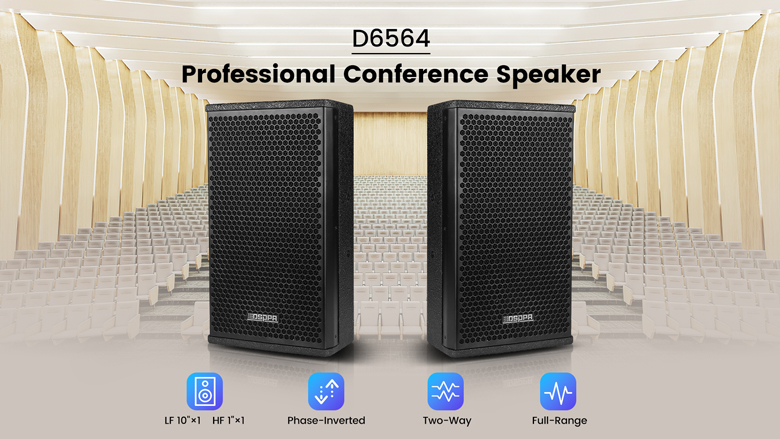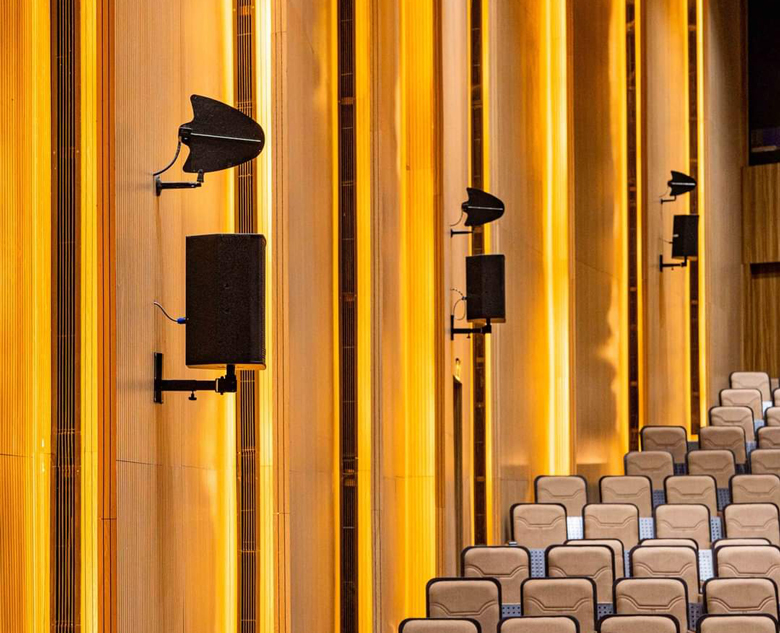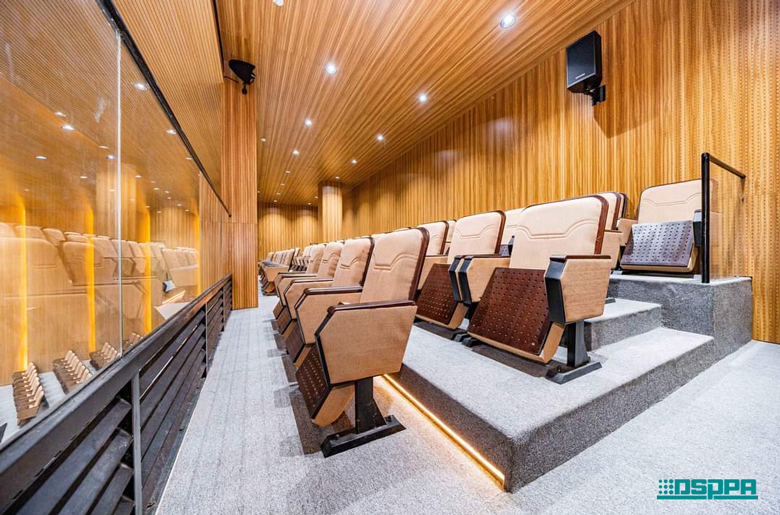
In a modern office environment, the optimized configuration of conference hall sound system in small conference rooms is crucial for enhancing meeting efficiency and communication quality. Especially in scenarios involving government agencies, enterprises, and large corporate groups, selecting the right sound system not only enhances the meeting experience but also ensures the accurate transmission of information. This article will thoroughly analyze how to configure an efficient conference hall sound system in small sonference room to meet various meeting needs.

In small conference rooms, the design of the conference hall audio system should meet multiple functional requirements to ensure the smooth conduct of meetings. Firstly, the conference hall sound system should have high-quality sound diffusion capabilities. For example, in a conference room of around 100 square meters, two sets of wall-mounted speakers can be installed in the four corners of the room. This configuration achieves a wide sound coverage, making the sound clear and bright and avoiding common sound quality issues such as feedback. Additionally, this design ensures the naturalness of the sound, guarantees the synchronization of sound and images, and provides a high-fidelity audio experience.

In addition, the design of conference hall sound system also needs to consider the even distribution of the sound field and appropriate loudness. The sound system should be able to meet the needs of multimedia meetings, including clear transmission of human voices and natural sound diffusion, enhancing the auditory experience of the participants. By reasonably configuring speakers and adjusting sound parameters, satisfactory audio effects can be achieved to meet the needs of daily meetings, academic reports, and training sessions.
A complete small conference hall sound system typically includes several key components: audio source equipment, control equipment, amplification equipment, broadcasting equipment, and peripheral equipment. Specifically:

Audio Source Equipment
Includes microphones and other input devices to collect the voices of participants.
Control Equipment
Such as a mixer, to adjust the balance and effects of audio inputs and outputs.
Amplification Equipment
Amplifier used to boost the audio signal so that it is strong enough to drive the speakers and reproduce sound.
Broadcasting Equipment
Speakers such as passive line array speakers used to convert audio signals into sounds that the human ear can hear and deliver them to all corners of the conference room.
Peripheral Equipment
Includes equalizers and effects processors to further optimize audio quality.
In specific configurations, according to the actual needs of the conference room, configuring VGA matrixes and AV matrixes can achieve multi-channel signal source image display. Simultaneously, using a power controller to control the screen lift function is beneficial. During the discussion process, the main unit of the conference hall sound system by conference equipment suppliers should have a camera tracking function to ensure clear recording of the meeting process. Additionally, to achieve centralized control of equipment, the system needs to be compatible with AV matrixes and VGA matrixes’ 232 control interfaces, projectors' 232 control interfaces, and power controllers' 485 control interfaces.
The optimized configuration of a small conference hall sound system is significant for improving meeting quality and efficiency. By reasonably configuring and optimizing system components, the sound in the meeting can be clear, and evenly distributed, enhancing the experience of participants. Whether it is for daily office meetings or special occasions like academic reports, an efficient conference hall sound system is a key factor in ensuring the success of a meeting.